It is, apparently, #WorldPoetryDay (on Twitter at least) and the question of writing a scientific paper in poetry form cropped up again (it does every now and then). And when it does, I usually end up digging through the dusty folders on my computer to find the few examples of chemistry poetry that I’ve come across over the years. To save me doing that again, I figured I’d just compile them into a blog post (and if you do know of any more examples, please point me to them in the comments below).
Let’s start with this classic from 1971 in the Journal of Organic Chemistry. A paper with the title ‘Comparative mobility of halogens in reactions of dihalobenzenes with potassium amide in ammonia’ doesn’t sound like it promises much in the way of literary sparkle, but take a look at how it starts:
The article is written in iambic pentameter and there’s an analysis of the whole thing over at the Poetry & Popular Culture blog.
The poetry even inspired the editor to insert this delightful footnote into the paper:
Next up is an Elizabethan sonnet that appeared in the correspondence section of the 17th December issue of Nature in 1981 under the title: ‘To trans, trans, trans-tricyclo [7,3,1,O(5,13)] tridecane’. The author is Howard Maskill, who we shall meet again very soon…
In 2001, Maskill writes back in to Nature to lament the fact that sonnets haven’t really caught on in the scientific literature:
But undeterred and inspired by some time spent in Japan, he suggests that perhaps haiku are the way to go instead:
Maskill is not the only poet-chemist out there; Roald Hoffmann, recipient of the 1981 Nobel Prize in Chemistry, is also well-known for his writing outside of scientific journals, including books, plays and poetry. He has been known to combine the two, including this table-of-contents entry in Angewandte Chemie in 2009 (thanks to Neil Withers for pointing this one out a while back).
In 2014, we even got in on the act at Nature Chemistry. To celebrate our 5th birthday, each editor who had worked on the journal to that point chose their favourite paper and wrote a short piece explaining their selection. The article was introduced as follows:
And then later that year, we just couldn’t resist a little bit of Shakespeare-inspired verse when Claire Hansell penned an editorial about two-dimensional polymers:
We’ll let Maskill have the final word, however, with this paper in Croatica Chemica Acta in 2014. He starts by explaining that he’s published a sonnet and a haiku in Nature, but that other forms of verse should be explored:
The article contains three limericks, but the final one is arguably the best:
Know of any other scientific papers written in verse? Let me know in the comments!

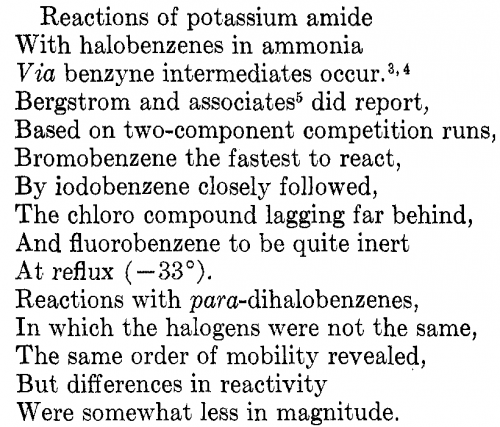

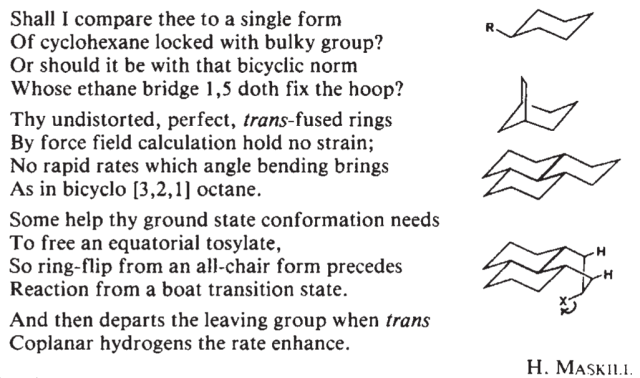

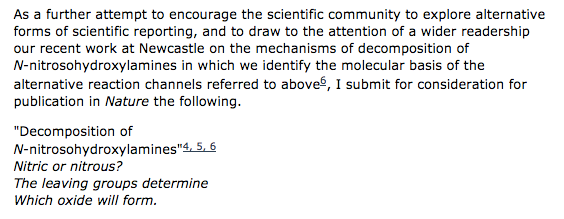
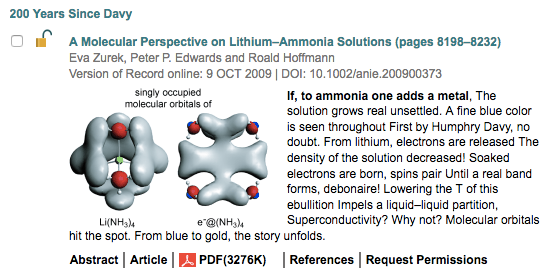
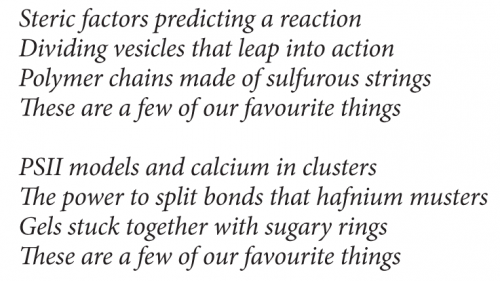
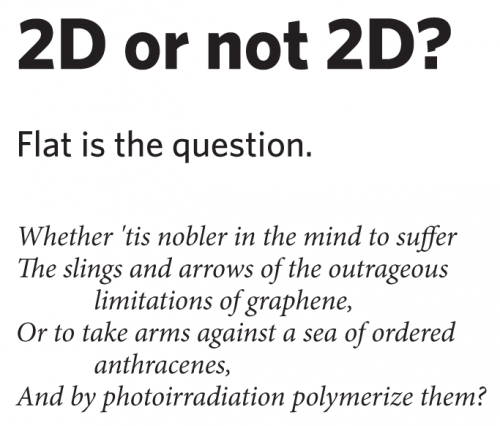
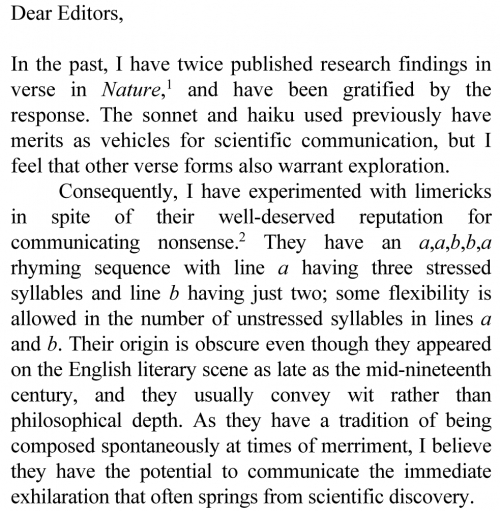
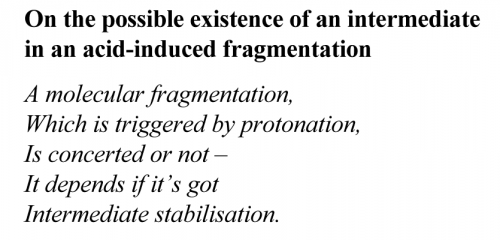
Although it’s not a research paper, my current undergraduate organic chemistry professor wrote this for his students. http://pubs.acs.org/doi/abs/10.1021/ed081p502